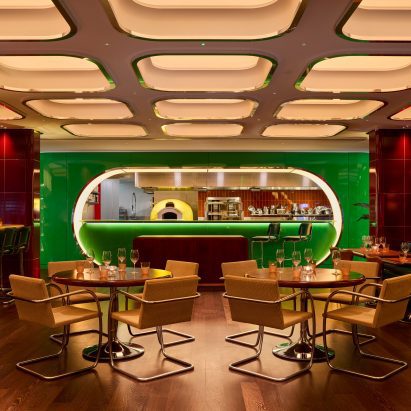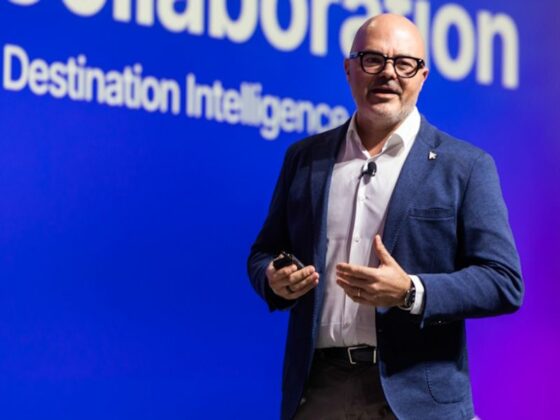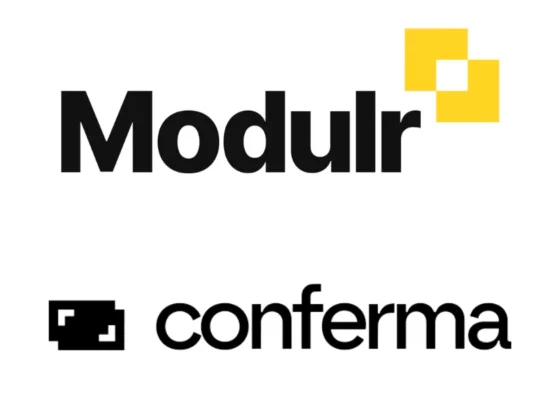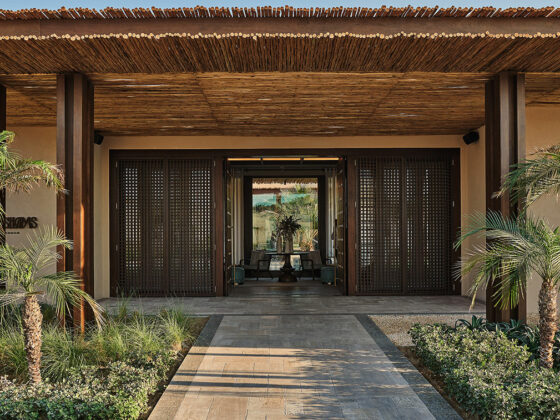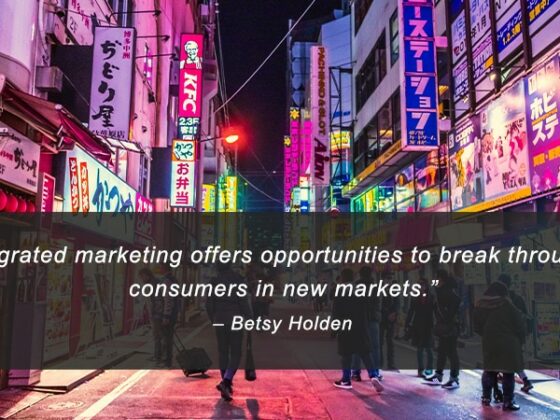Josiah: What did you learn about revenue maximization as you were overseeing Atlantis? Because that is more than 1500 rooms, right? Incredibly complex operations. What did that teach you about revenue as you were overseeing that?
Judith: A lot, and it was also it was an amazing learning ground and also, you know, it allowed you to test, and the team was just simply fantastic. But then also in the early days, you know, the key focus was around rooms revenue optimization, but then at some point, the resort had such high occupancy levels, and more and more supply was entering the market, so you did have to find additional revenue streams, and for that, you really had to take the other departments onto the journey. And that was a big learning curve for me in the beginning. Whilst you do understand what needs to happen from a theory perspective when you do go into restaurants, and you need to optimize the outlets or you need to apply revenue management, if the teams aren’t aware of how they can help and contribute, then you have a lot of resistance, and you face a lot of bottlenecks. And that’s what I can see now too, you know, with other hotel management companies or hotels. It’s really the culture that has to be built. And that’s from, it starts from the procurement department on how the items are received. So, the ingredients that go into the menu. how the point of sale system is then set up and if the grouping is correct. A lot of data cleaning had to happen. But then also from the hostess and from the restaurant reservation system, how things are set up, how long are your meal periods. And I mean at the Atlantis at the time, you know, there was one specific restaurant, and I had just moved from Bangkok to Dubai, and the restaurant was empty between six and eight o’clock in the evening. And I asked the question why, and then, you know, I kept hearing, oh, Judith, you don’t understand, it’s a late dining culture here in Dubai. And I thought, okay, fine, you know, so I’m just here, new. And then somebody else said, oh, let’s do an early bird, between six and eight o’clock. Then, marketing dollars were spent on the early bird. And then again, no business. And then, Judith, you know, we told you it’s a late dining culture. But I wasn’t giving up. So then I thought okay well let me, that’s then when I started rolling up my sleeves and that’s when I started digging. So anyway, cut a long story short, then it turned out that the reservation system was not set up correctly for the restaurant. And that not enough tables were made available. Because in the beginning, they did not want the kitchen to be overrun. That’s then why between 6 and 8 o’clock the restaurant was pretty much empty, but then from 9 o’clock, everybody was there because that’s when the system had its full capacity, and that’s what led people to believe that it is a late dining culture. When in reality, it’s actually a family resort, and families would have liked to come earlier, But when they called in to make the booking, then they were told the restaurant was fully booked. So then, you know, those were some of the small adjustments that can have a huge impact before you even start talking about pricing. It’s understanding your meal periods, and your meal duration. It’s understanding your optimal table mix and is your table mix dynamic? Is it flexible? And it always depends on what type of restaurant you have. You might have restaurants, you know, where you don’t want to have dynamic tables and then you have restaurants again. where you must have dynamic tables. Then we started the process of menu engineering with the chefs, with procurement, to identify which items are the ones that are selling well. but are high in cost, which items are selling well but are low in cost, which items are selling not well but are low in cost, and which items are selling not well but are high in cost. And based on that then we have taken a look at the menus. And we have then for the key dishes that we wanted to have that every dish had a strategy. Not just in terms of how it’s placed on the menu, and you can imagine it like the Google heat map. You can place the items that are the highest profitable that you want to sell on the menu in a way so that it then converts. It’s about how you display your pricing, how you have your description, and how you calibrate the various items so that you don’t lose the customer. And then with the items that you have identified as your most profitable item on the menu that you want to promote, you can then work together with the commercial teams to make sure that those are the ones that are being featured on, you know, on Instagram, where then the storytelling is around, that then also then your sales department, those that are responsible for your restaurant or for your outlets, then speak about that. And then very similar, then you can then also translate then to your spa. So it’s the, a lot of times, you know, revenue optimization can be, has a bit of a fear factor to those functions that aren’t familiar or that aren’t analytical, but it doesn’t have to be that scary. And then if you work with the teams on reporting and design that is easily understood, then it’s very easy to identify, you know, what is working well and what’s not working well. You have the revenue department, they can manage the systems and they can make sure that everything is set up correctly. Coming back to restaurants, you know, that you make sure that if you have multiple restaurants that you have things like the spelling of Coca-Cola the same and dot in different ways by restaurants so that you can do your roll-ups. When you go into the spa, then, you know, you can take a look at which treatments are selling well, at what time, and then benchmark these treatments against the competition. And then also make sure that the therapist and the receptionist then understand which treatments there are that you would like to sell. Then, your most profitable treatments are the ones that you would want to make available during your high-demand periods in the spa. and then treatments that have a high cost, then those are ideally, you know if guests still want them, but then you push them into the time slots that aren’t selling out, so then that way you still stay dynamic, and you don’t even have to go into the complexity of dynamic pricing. It’s just adjusting what you have available throughout the day already anyway. And then, if you want to take it to the next level from there, then you can start having dynamic pricing or different price points on weekends or You can have higher pricing available during a high season. And that’s always something that surprises me is, you know, when you look at room rates, they’re so flexible. They go up and down based on supply and demand. But then when it comes to the pricing in restaurants, a lot of times the pricing is static. So we still expect a low-season customer to pay the same price point for a coffee that a peak season customer is paying. and the same then also then for the spa or you know if you have any activities etc.
Josiah: So what you’ve walked through is a very comprehensive way of looking at this. You’re working cross-functionally. You’re thinking very strategically. How do you get the most out of this? I’m curious if you play this out, if you’re managing your revenue and your profits really well across the business, what does the world of hospitality look like? I’m curious of some of the sort of run-on effects or the second-order effects of really effective revenue optimization.
Judith: The hospitality industry will then also see that today, a lot of focus is on rooms revenue optimization because that’s the area that’s the highest in terms of profitability. But imagine if other departments were given the same level of attention, how much more profitable these departments could become. And certain departments a hotel has today are often just a cost center, and they don’t have to be just a cost center. And if you were to take the holistic approach in terms of total revenue optimization, it then also forces organizations or hotel companies to see, is there any underutilized space? So coming back to the Atlantis, at some point, then we had to see, you know, we needed more restaurants. So then there was storage space that was then converted into very nice dining outlets. And before then, that was just simply, you know, what we refer to as dead space, a non-revenue driving piece of real estate, which still cost the owner money when the hotel was built. And it’s really taking a look at every single aspect of the business. And if something is not working, how can it be tweaked? And if it cannot be tweaked, then how can it be replaced? What other concepts can be implemented? And what is it that, you know, from a commercial side of things, is needed but then also from an offering to the end consumer is needed in order to set your product and your hotel apart from the competition. A lot of times, it’s the off-the-shelf approach. You build a hotel, you have your convention space, you have your restaurants, you have your spa and that’s it. But imagine if you had three or five hotels all in a row, whether it’s on a road in a city or whether it’s on the beach, and they all charge the same rate. You know, ask yourself, why should I come and stay at your hotel? What is it to me as the end consumer that I get to experience that is different? And how are you then taking that to market about, you know, telling me what that difference is?
Josiah: I’m curious what your advice would be, whether it’s for owners or other participants in the space; what skill sets are going to be essential for effective asset management moving forward?
Judith: It’s a 360-degree approach. It’s understanding the commercial strategies, it’s understanding the operational aspects of a hotel, and it’s also understanding the financial side of things and the profitability that comes down. It’s understanding the real estate investment perspective on what’s needed, then also to advise the owners. Is it a mixed-use product that is needed? Is it all for luxury? Is it an entry-level hotel, you know, is it then, is it best to go franchise? Is it best to go with a management agreement? It’s an asset management company that can also help to do the feasibility studies or review the feasibility studies that are being done to make sure that they really get the optimum out. It’s a lot of times you have the owner that says he wants to build a hotel. The management company then says, okay, this is how many rooms we’re going to build and then provides the inventory mix, provides how many restaurants, and then provides a banquet space. And that’s something today. To me, does it have the opportunity to evolve? Because why do we still build hotels today with so much banquet space? Or why does every hotel need to have a banquet space, you know, when the demand for groups is not there anymore? Or do you build a banquet space that is flexible so that you can really then convert that venue, depending on the season, into other venues throughout the year? Whether it’s then, I mean, you know, we’ve seen tennis courts or paddle tennis courts inside the function space. We’ve seen concerts. When you look at opera places or like the Dubai Opera, that space has been built so flexibly that you don’t just have to have seating in there. It’s almost like a concert venue, you know, where the stage can be built in many different ways in order to really cater to what the act is.
Josiah: It’s interesting to see that evolution in the physical property and the opportunities that unlocks. And if you can think about all these diverse uses or diverse offerings within a property, and you also think about, as you mentioned, there needs to be a complete view of revenue, of profit. What are some of the key performance indicators you advise hotel owners or others in this asset management space be looking at?
Judith: It’s really looking at the profitability per square meter for every single department, and that way, then you can identify which departments are underperforming per square meter and which business units are performing really well per square meter, and which business units are not performing well per square meter. You know, some business units might be strategic that you need to have when you look at a defined dining restaurant that might have more space. You might have to have that fine dining restaurant as a drawing point, as a talking point for the hotel itself. And you might not want to touch, but then you have other areas where you could then really redo the concept or you can make it bigger, you can make it smaller, depending on what the demographic is that’s coming. It’s also then for the GOP that’s important to understand, to take a look at. And then, I mean, ultimately, then the profit line for the owner, for the asset.
Josiah: I am curious; you mentioned banquet halls are maybe less in demand than they were before. Are there opportunities that you’re seeing now that really stand out to you as maybe a low-hanging fruit in terms of this is presenting a lot of opportunity to hospitality owners and operators for making as much money per square meter as possible?
Judith: It’s the, I mean, taking a look at, you know, what you already have in place. And then, if you do have any space at the moment, it could be, for example, a garage. If you have a flat roof, could you build paddle tennis courts on? So paddle tennis is, you know, the fastest-growing sport at the moment. It’s taken the GCC countries here by storm. And whoever has a piece of land available puts a paddle tennis court on. And that’s shown a really great return on investment. So we’ve seen rooftops converted into paddle tennis courts at garages, golf courses that had a lot of greenery still available, they have made paddle tennis courts available, they have reduced their car parks, you know, if they had too much space and put paddle tennis courts on. That’s a huge opportunity and really looking at what it is that you don’t have, that you could build, but the competition doesn’t have that as well. Then you take it to market, and then you hit it hard from a sales marketing PR perspective to get that return on investment. And whatever way, you know, is built or is invested, is then it’s don’t just rely on the management company to give you the ROI, then also have your asset management team or consultants help you revalidate, you know, what that ROI is, but then also measure to that. And then that becomes part of the annual budget process. Then, depending on how many months or years it takes for a certain investment to materialize, the ROI will be gotten back. In that way, you can then also measure the success going forward.
Josiah: I think this is where this all becomes really interesting, right? Because there is the financial analysis, there is a lot of focus on the numbers, but there’s also the element of creativity. When you create something fun interesting and compelling, it’s going to get people staying at our properties and spending money. So Judith, thank you for walking us through that.


